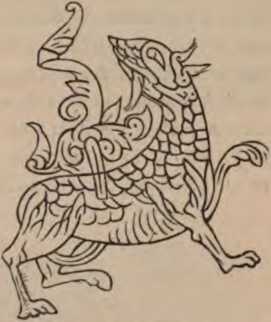 |
| Viking graffiti found in Orkney |
There's plenty about the show that I don't care for (total absence of suspense, tedious love stories, gaping plot holes), but what I love about it is its total commitment to medievalism. The Vikings speak in what sounds like Old Norse, the Anglo-Saxons speak Old English. Aethelstan and his brethren labor in the scriptorium, copying ancient texts and making art to glorify Christianity. Enlightened characters, like Aethelstan and Ecgbert, have heard of the Romans and their achievements, while the common folk believe that giants once ruled England. The blood eagle makes an appearance (just like in "Everything Ravaged, Everything Burned"), Charlemagne and Offa are name-checked, and everyone is dirty (except for the enlightened King Ecgbert, who bathes regularly).
And yet the show is so good at presenting the Northmen and Anglo-Saxons of the late 8th and early 9th centuries as just similar enough to us to be sympathetic, but strange enough to be compelling. I think Aristotle meant something else when he said that drama should be "transporting," but I still argue that "Vikings" transports the viewer to a very different time and place. The show looks good--the settlements, homesteads, and even great shrines (like Winchester) are small and poky, the great halls are big, smoky, and filled with people and animals. The women wear the same style of ornaments that I saw in York, Edinburgh, and London at different Viking exhibits. More importantly, the Northmen on the show are riveting and alien. They are motivated by different things from the viewers (and also the Anglo-Saxons)--the potency of their beliefs and rituals echoes throughout episodes like "A King's Ransom" and "Sacrifice" (dealing with burial and ritual sacrifice, respectively), but also in the repeated insistence on fate, the desire of the Northmen to die in battle, and their gender relations.
The writers have admittedly drawn on some great historical source material: Saxo Grammaticus, Ibn Fadlan's account of his time among the Rus, sagas, annals, and skaldic poetry. But I wonder about another, uncredited source: King Hereafter. Ragnar reminds me of Thorfinn: His watchfulness, his soul-friendship with Aethelstan, his dry wit ("looks like your god really came through for you"), his gift for military and political strategy, and his gift for foresight are all qualities that he has in common with Thorfinn. Even Ragnar's complex relationship with Flokí is somewhat reminiscent of the dynamic between Thorfinn and Rognvald (without the homoeroticism). Perhaps the third season will bring more similarities between their storylines: Ragnar will reign and, like Thorfinn, will journey farther afield (perhaps Constantinople instead of Rome), have his faith in his gods tested, and eventually die in single combat and be called to Valhalla.